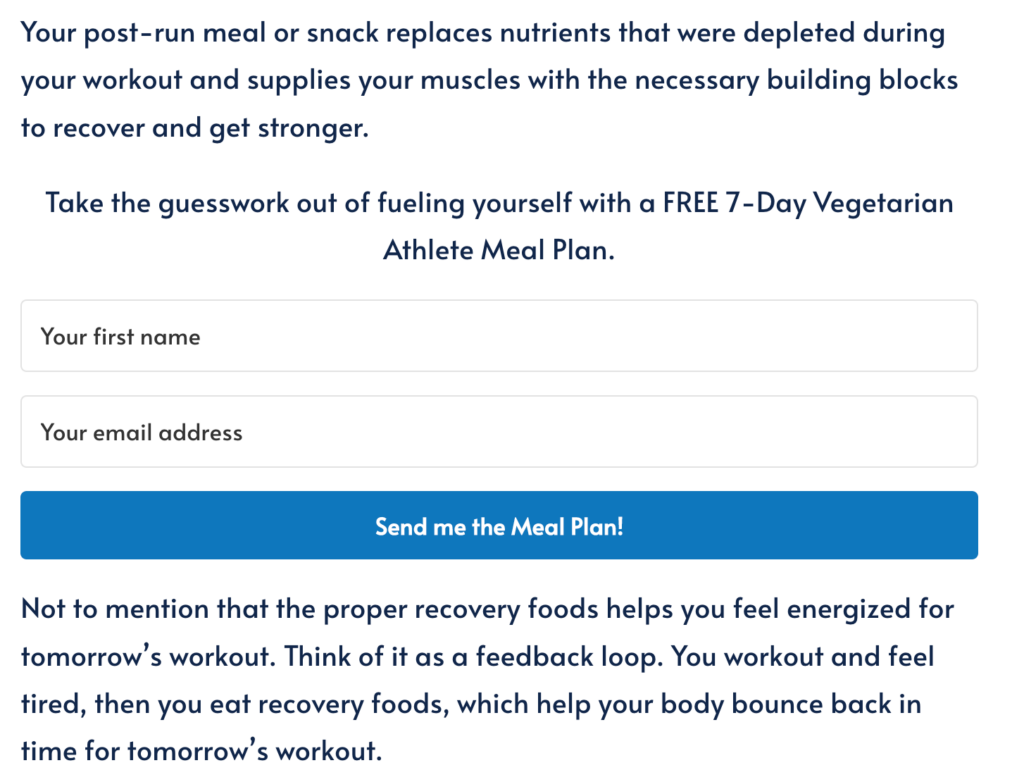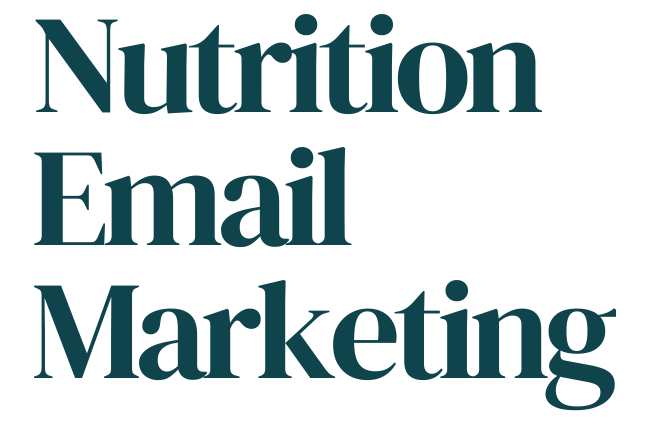Why Your Email List Isn’t Growing: 7 Reasons You Need To Know
If you’re a nutrition professional, you’ve probably heard about the importance of growing a strong email list.
Not only does your email list allow you to directly communicate with your potential and existing clients (without navigating a tricky algorithm), it’s a great way to nurture leads for future services. Plus, your email list can drive traffic to your website and help grow your brand.
But many nutrition professionals complain that they have a hard time growing their list. How do you get people to sign up and stay engaged with your emails?
This article discusses the top 7 reasons why your email list isn’t growing, how to correct the issues and why it matters.
1. No lead magnet
People don’t want to subscribe to your newsletter. They just don’t. But they will give you their email address in exchange for a free resource, like a tip sheet, checklist, video or meal plan.
These free resources are called lead magnets, and they entice people to give you their email address. These people are interested in the topic you’re discussing and may want to hear more from you.
A lead magnet is the first line of communication with a prospective client. It should educational and valuable, but it shouldn’t give away so much that people won’t be interested in buying your product.
2. Opt-In Forms aren’t visible
Many of our clients have opt-in forms, but they are hidden on a landing page or underneath a blog post. If an opt-in form isn’t front and center, there’s a good chance that people won’t even know you have something of value.
Place opt-in forms where they’ll be most visible, such as the sidebar, a pop-up, or a floating bar at the top or bottom of the page. You can also include an inline form within highly trafficked blog posts.
Here is an example from a blog post on my nutrition site, Greenletes:

The first step to getting people to sign up for your email list is putting the opt-in form in front of their eyes.
3. Poor opt-in copy
The copy on your opt-in form should draw readers in and not make them think they are joining an email list. Let’s look at these two examples:
“Download the free guide to reducing your blood sugar.” This is broad– what exactly am I getting in this free guide? Not to mention that it’s somewhat boring.
Instead, what if the headline looked like this?
“How to reduce your blood sugar in just 7 days. A Certified Diabetes Expert’s step-by-step guide to controlling blood sugar spikes.”
The downloadable guide is probably the same in both of these instances, but the opt-in copy makes people more likely to download the second option.
Also, don’t use the word “subscribe” on the opt-in form. “Subscribe” makes people feel like they are going to be thrown onto a list of spammy emails. Instead, use simple phrases like, “Send me the guide” or “I want in!” or “I want to get started now!”
Here’s an example of a high converting opt-in:
4. No promotion
Having an opt-in on your website is the first step in getting people signed up for your list. But if your audience is primarily coming from a different platform, like social media, you must be promoting your opt-in there as well.
Consider cross-promotion on social media through a contest or collaborating with another blogger to help grow your list.
5. You’re opt-in doesn’t provide value
Your opt-in should be informative, engaging, and target your ideal client’s pain points. If you have an opt-in that isn’t getting many downloads, consider whether or not it’s what your audience wants or needs.
If it doesn’t provide value, think about switching your lead magnet. If you’re not sure what your audience wants, send a survey to your list and ask them a few questions, like:
- What’s your biggest struggle with [fill in the blank]?
- What problem can I help you solve?
- If you could wave a magic wand, what product would you create to help with [fill in the blank]?
6. You don’t know your audience
The key to being able to address your audience’s pain points is knowing what types of people are visiting your site.
Do you know their demographics? Do you know what problems they are facing on a daily basis? How can you help them solve those problems?
Knowing the answers to these questions is the only way to create an opt-in and other messaging that speaks to people. An opt-in is the first step in building a relationship with prospective clients and turning them into paying customers.
7. No Mobile Optimization
With more than half of emails being read on mobile devices, emails must be reader-friendly on mobile. Use a mobile-responsive email template, keep subject lines short, and make sure your call-to-action buttons are easy to tap.
Most email providers allow you to preview the newsletter as it will be shown on desktop or mobile. Make sure you look at the mobile version, even if you create the newsletter or form on a laptop or desktop.
Growing your email list can seem daunting, but these seven tips can help your list grow quickly and organically. Keep providing value, stay consistent, and always remain focused on your ideal client’s needs, and you’ll build a list that will help grow your nutrition business for years to come.

